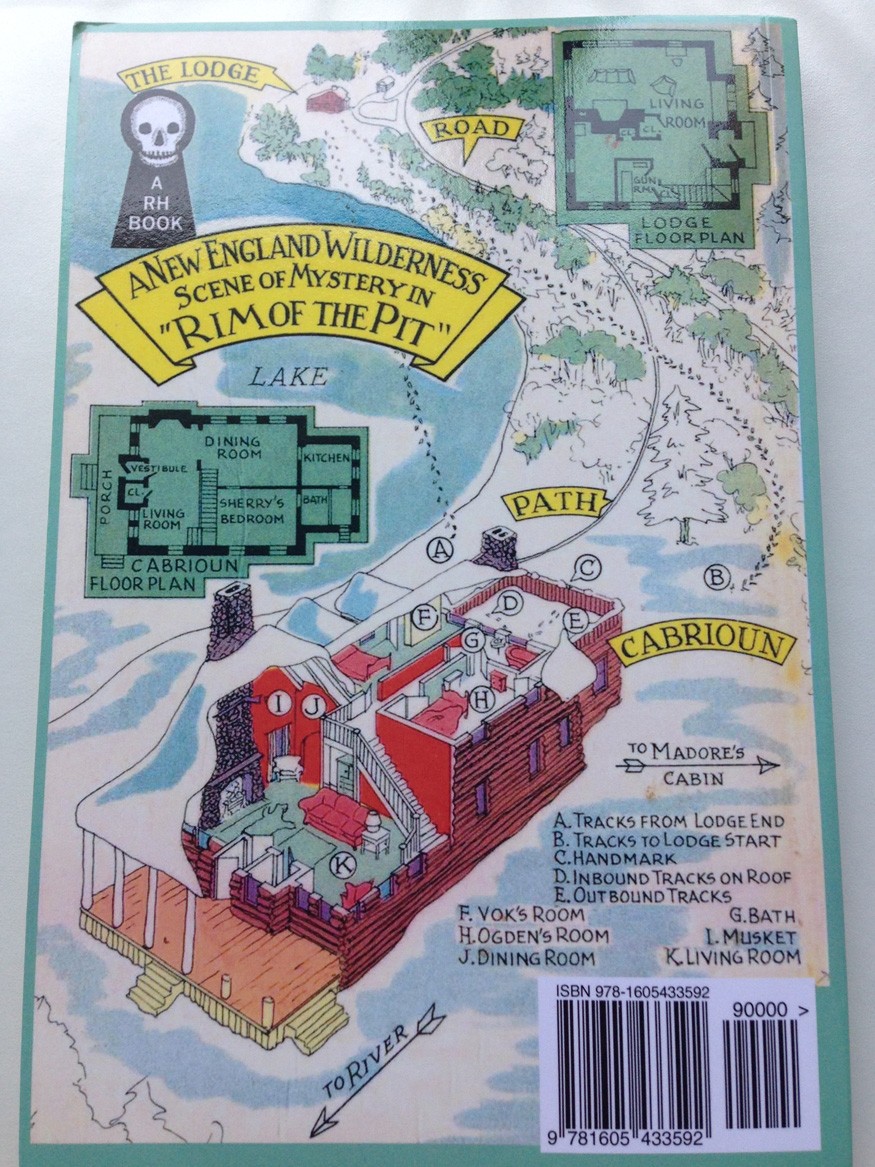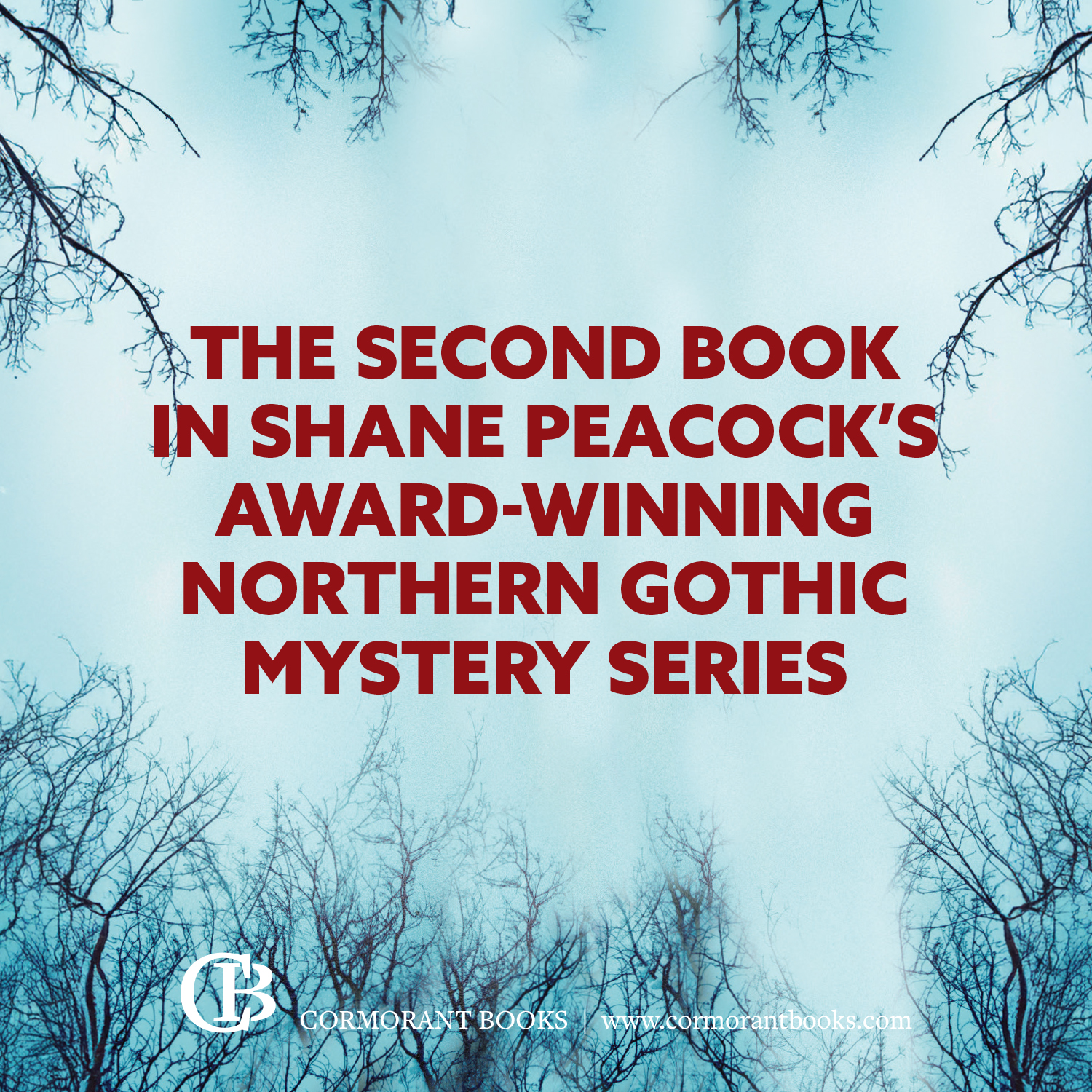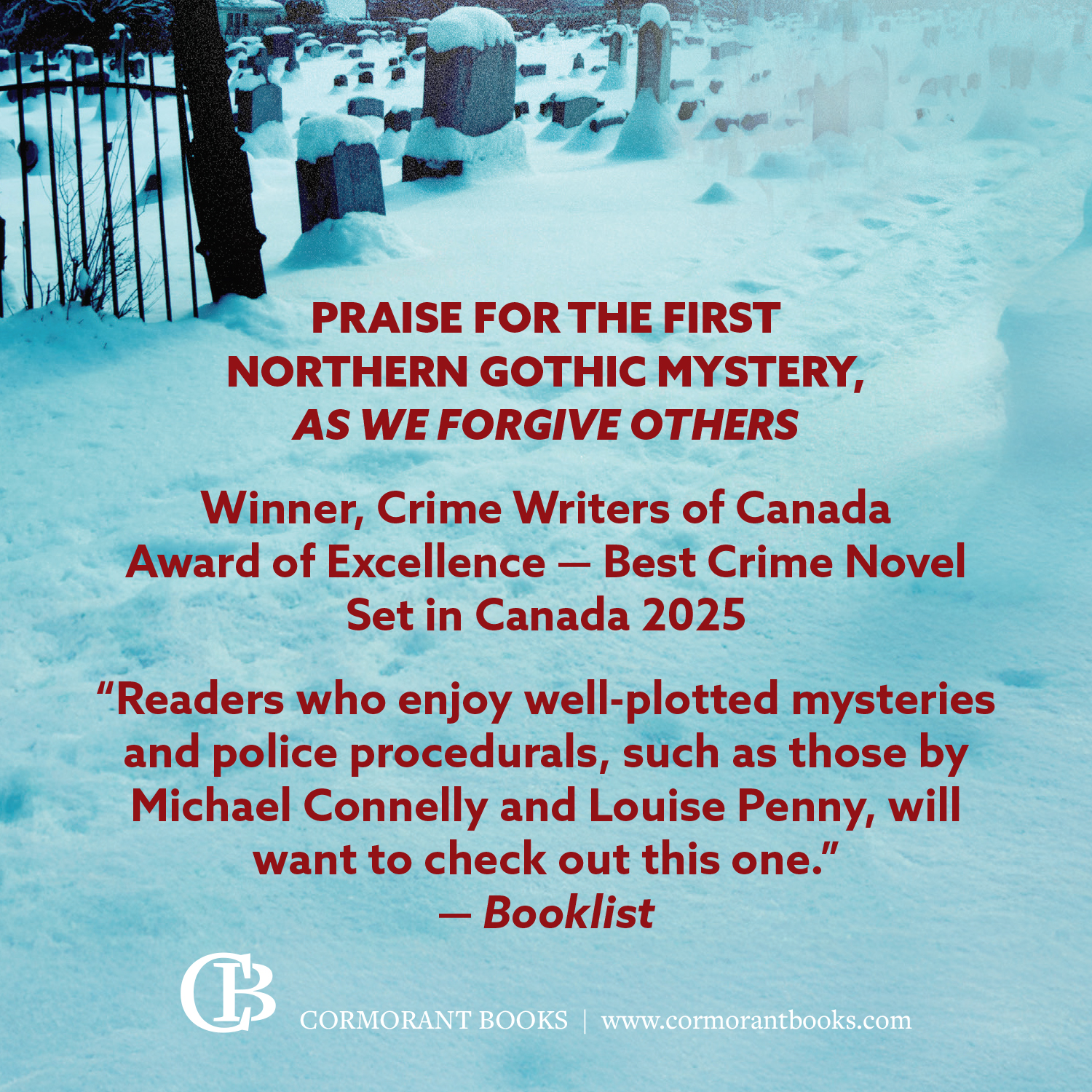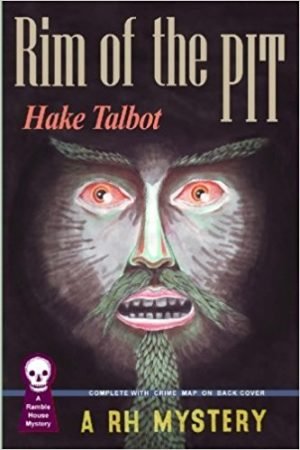
 Today, when lists of new crime and thriller books are saturated with stories involving ever-more numerous and gruesome deaths for their fictional characters, a look back at the kinds of mysteries that emphasise puzzles over gore can be more than a bit refreshing. A classic in the subgenre of ‘impossible crime’ puzzles is Hake Talbot’s 1944 novel, Rim of the Pit.
Today, when lists of new crime and thriller books are saturated with stories involving ever-more numerous and gruesome deaths for their fictional characters, a look back at the kinds of mysteries that emphasise puzzles over gore can be more than a bit refreshing. A classic in the subgenre of ‘impossible crime’ puzzles is Hake Talbot’s 1944 novel, Rim of the Pit.
The current edition was published a decade or so ago by Ramble House, a firm specialising in reprints of neglected works from near-forgotten crime writers and which has an affinity for ‘mapback mysteries’. The map printed on the back of this edition of Talbot’s book is a boon if you hope to follow the clues and red herrings of a complex plotline. And you will want to do so, as Rim of the Pit appears near the top of so many best-of lists in the impossible crime/locked-room mystery category. In one poll it was only exceeded by John Dickson Carr’s 1935 classic The Hollow Man (published as The Three Coffins in the US).
In this story, Talbot pulls together an entertaining cast of personality types who seem to have stepped right out of the casting call for an Agatha Christie film. They’re installed in two snowbound lodges – one called Cabrioun, the other The Lodge – in the New England wilderness, where their isolation and imaginations can take full rein.
Logging rights
The lodges are the property of Frank Ogden, via his wife Irene, who inherited them from her late husband – a violent and disagreeable man named Grimaud Désanat. Several of Ogden’s colleagues in a lumbering business are present, along with a group of young people. The latter includes Ogden’s spirited step-daughter and a man she may be interested in kindling a romance with, Rogan Kincaid. Kincaid is a professional heartbreaker and a continuing character in Talbot’s tales. He’s the closest thing to an amateur sleuth in the group, and is one of the only people to keep a cool head when the atmosphere and the weather turn stormy. There’s also a surly and deeply superstitious caretaker and a Czech magician, mysteriously invited by Frank Ogden.
The business associates are present, it transpires, because their livelihoods are threatened by Irene Ogden’s insistence that they cannot log a particular parcel of land Désanat left to her. She says he made her promise it wouldn’t be logged for 20 years, and even though he’s dead, she remains terrified of him. Perhaps her anxiety is occasioned by her skills as a medium, and it is only with great difficulty that Ogden browbeats his wife into conducting a séance to put the question about the logging to Désanat directly.
As you might imagine, everything goes downhill from there. The séance does seem to conjure Désanat who rails at the assembled guests. They are torn between believing they’ve seen a ghost, and conviction that there is no such thing. As inexplicable event piles upon inexplicable event, both belief and non-belief are increasingly tested. With a blizzard raging, the deep snow means no one can come or go without leaving evidence of their passage – a wintry plot complication used by both Carr in The Hollow Man and Agatha Christie in Murder on the Orient Express. Yet someone or something seems to be coming and going at will.
Cannibal spirit
The eerie atmosphere Talbot creates gives the feeling that time has stopped for these characters, and the cocoon of their isolation becomes increasingly menacing. The caretaker is convinced there is a wendigo at work, and luridly describes an Algonquin cannibal spirit associated with greed and murder. Wendigos are capable of flight, handily explaining the lack of footprints. When a murder does occur, it appears the malevolent spirit has possessed one of the characters. (See also our review of Windigo Fire.)
Talbot uses the supernatural as a plausible adjunct to crime, and by tradition, it can go in many directions… and misdirections. Arthur Conan Doyle was a well known devotee of spiritualism and you find it fairly often in stories set in the Victorian era, such as Linda Stratmann’s historical Mina Scarletti series, and even the modern-day Jonathan Dark or the Evidence of Ghosts by AK Benedict. In Talbot’s complex story, it’s easy to get to the point where you believe the intervention of spirits is the only ‘rational’ solution.
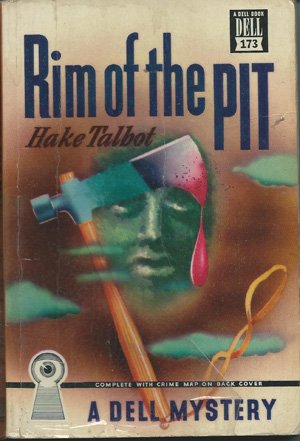 Solving the deaths at Cabrioun Lodge is not the only difficulty facing Rogan Kincaid. He also must reverse the locked-room trope and get everyone safely out of the area before the police are brought in. He will need a much different narrative for the recent events in order to satisfy the investigators without implicating any of the household. The truth, whatever it is, won’t work, because who would believe it?
Solving the deaths at Cabrioun Lodge is not the only difficulty facing Rogan Kincaid. He also must reverse the locked-room trope and get everyone safely out of the area before the police are brought in. He will need a much different narrative for the recent events in order to satisfy the investigators without implicating any of the household. The truth, whatever it is, won’t work, because who would believe it?
Rim of the Pit is very much a period piece, complete with the attitudes and outlook of its era, and that aspect alone makes for a fascinating read. As Carr has written about a good locked-room mystery, “The effect is so magical that we somehow expect the cause to be magical also.” Certainly the guests at Cabrioun and the Lodge, aided by Irene Ogden’s disastrous séance and the Czech magician Vok, believed it so. As a result, their conjectures have beguiled readers for nearly 75 years.
American writer Henning Nelms, who died in 1986, used the name Hake Talbot for his fictional works. Like more than a few authors, it seems he had one really good book in him. An earlier novel, The Hangman’s Handyman (great title!) was not as successful, and he also wrote short stories and a play. His principal career was as a stage magician and, under his real name, he penned Magic and Showmanship: A Handbook for Conjurers. This book, still in print, says, “The art of conjuring consists in creating illusions of the impossible.” It’s a maxim that Talbot put to good use in Rim of the Pit, delighting readers as he did so.
Click here to read about another classic looked-room scenario, The Big Bow Mystery.



